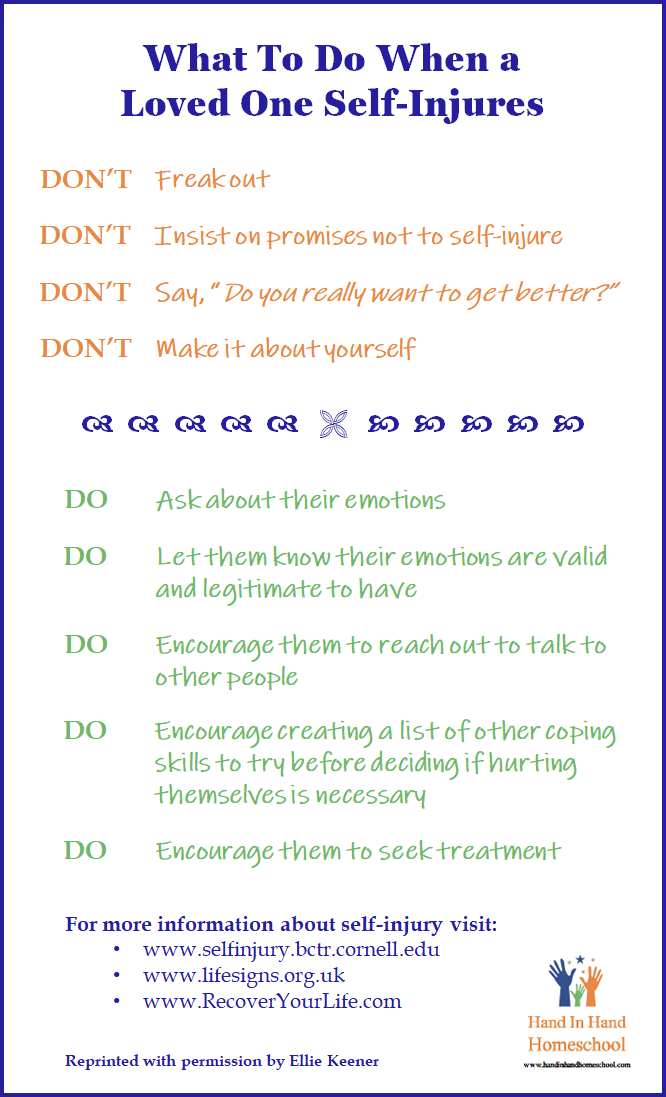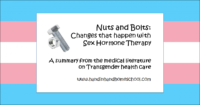Self-injury is the “deliberate, repetitive, impulsive, non-lethal harming of oneself”. Self-injury can take the form of:
- Cutting
- Burning
- Punching one’s self or objects
- Certain types of hair pulling
- Picking scab or interfering with healing
- Other types of harm to one’s body
Self-injurious behaviors can occur with people from all types of backgrounds: gifted or multiply disabled, rich or poor, austistic or neurotypical, public school or homeschool.
As with many other mental health issues, social stigmas often keep parents from talking about tweens, teens, and adults who self-injure. While some families may be uncomfortable discussing the topic with professionals, for fear of a potential Child Protective Service investigation into their family life, allowing that fear to dominate decisions may deprive the loved one from getting the treatment they need.

Treatment, including a combination of talk therapy and medication, can help a person overcome the complex interplay of factors that lead to self-injury. Helping your loved one get help begins with – not yelling at them to stop hitting themselves or cutting – but a combination of Dos and Don’ts that help them understand that they are NOT a bad person for struggling with self-injury.
More Resources and Articles About Special Education
- Bill of Rights for People Who Self-Harm
Created by Deb Martinson, a list of 10 fundamental rights that should be maintained for a person who self-injures.
- LifeSIGNS Self-Injury Guidance & Network Support
A user-led nonprofit, founded in 2002, that guides people who hurt themselves towards new ways of coping, when they’re ready for the journey.
- Cornell Research Program on Self-Injury and Recovery (CRPSIR)
Dedicated to adding to the growing body of research-based knowledge about self-injury, along with resources and useful tools for those seeking to better understand, treat, and prevent it.
- The Dark Side of the Stim: Self-injury and Destructive Habits
A comprehensive look at the differences between autistic stimming and self-injury.



